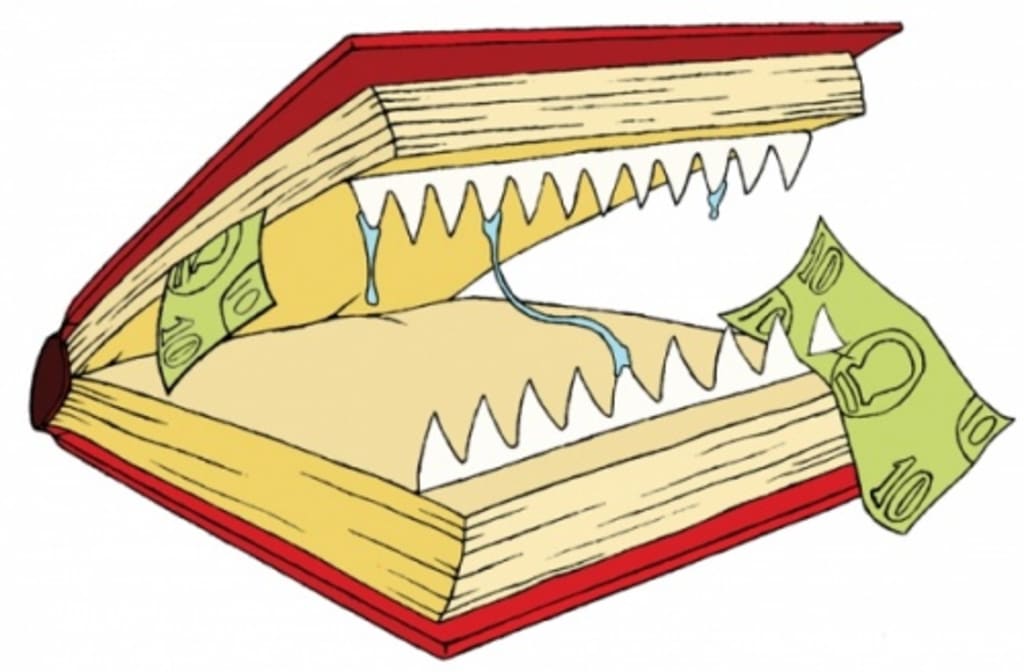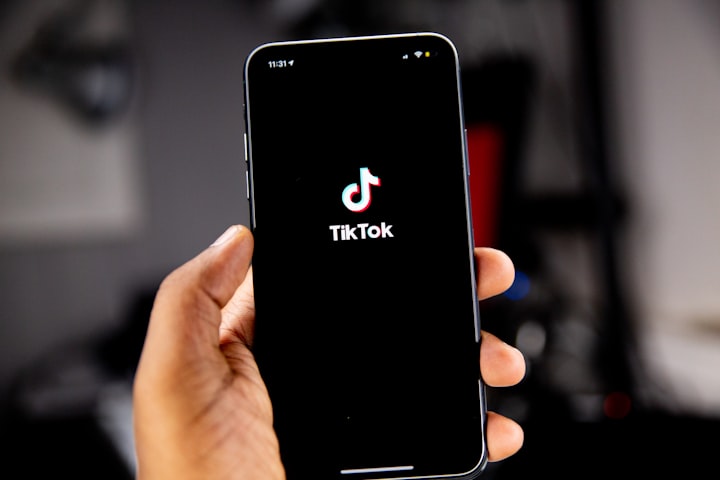The War on Textbooks
When an already over priced education makes its final blow.

Since beginning college I have been faced with the harsh reality of money. The reality being I don’t have any and everything in this world has a price I must pay. A price we all must pay. Tuition has risen so much over the years that so many students either drop out or go into debt. Moreover, the price for textbooks have also been risen. Some books go for over $100 each and when you have six classes that is $600 you are forced to pay just for books. Most people who are attending college can’t afford that. There needs to be an alternative so students don’t go even further into debt over textbooks that half the time aren’t even used throughout the semester. An article in the Times by Kaitlin Mulhere discusses the alternative of eliminating printed textbooks at Maryland University College to save money for their 64,000 undergraduate students. Using online methods instead of printed textbooks is not only much more convent for a busy, traveling student but it can be one less thing they must worry about paying for. Mulhere states, “whether individual students are paying a literal 1,041 percent more today than they were in 1977 is not the question, said Mark Perry, a professor of economics at the University of Michigan who has tracked rising textbook prices for years. College textbook prices are increasing way more than parents' ability to pay for them. At the extreme end, one specialized chemistry textbook on his campus costs $400 at the campus bookstore.” This quote from Mulhere lays out for us the exact difference from the prices in the 70’s to the prices for textbooks now.
Ben Popken makes an interesting point on textbook prices in his article for NBC when saying “they are sold like drugs.” Popken goes on to say that “unlike drugs there is no insurance to cover the out of pocket cost.” This is a very true statement because students tend to be blindsided by the textbooks they are forced to buy. My very first semester a student in one of my classes had to drop the class because he couldn’t get the textbook and was falling behind. This is a situation that shouldn’t even be a possibility and it wouldn’t be one if the prices for all textbooks were reasonable. Popken states that “Ethan Senack, higher education advocate for the U.S. Public Interest Research Group. But they haven’t actually brought textbook prices down. The cost of a new print textbook has climbed steadily over the decades, increasing 1,041% since 1977, according to data from the Bureau of Labor Statistics.” The work that Ethan Senack is doing is one of the many efforts to bring the prices down. It along with everything else must take time to make real change. Open textbooks is a part of that change. “Open textbooks are written with the understanding that they’ll be free to read online and affordable to print into a hard copy, between $10 and $40, according to U.S. PIRG. In comparison, the average cost of a new textbooks is $68, according to the National Association of College Stores, and many titles easily top the $200 mark.” This quote shows the steps being taken to lower the prices of textbooks for everyone.
Carl Straumsheim’s article entitled "Triaging Textbook Costs" discusses that although there are free and low cost textbooks, there are not enough although they are good efforts. These efforts aren’t as affective in higher level classes, which is why a single textbook can go for as high as $400. Straumsheim also mentions a situation that Mark Perry, a professor at University of Michigan talks about. “Perry, professor of economics and finance at the university, noted in a blog post that textbook prices increased by 161 percent between 1998 and 2014—more than the cost of medical care and new homes. Going back to 1978, prices are up 945 percent.” The research done by this professor is scary to me as a student because the rise in prices has made attending college and succeeding in college a huge challenge. These high prices are setting us up to fail. “Faced with the prospect of paying several hundred dollars for a single textbook, some students may choose not to buy. A 2014 survey conducted by the United States Public Interest Research Group found 65 percent of students have done just that, even though virtually all of them feared it would hurt their academic performance.” This last quote from Straumsheim shows prove of the financial struggle students across the country are facing. One that is putting their grades and performance in their courses at risk. No student in any college should feel that it is worth putting their education at risk because they can’t afford overpriced books. The worst part is when you buy these books and end up not even using them. Such a waste.
About the Creator
Bridget Barnes
Hi, my name is Bridget Barnes. Hoping this is a stepping stone to making my passion for writing a career.Feel free to leave a tip if you enjoy the story as much I enjoyed writing.






Comments
There are no comments for this story
Be the first to respond and start the conversation.